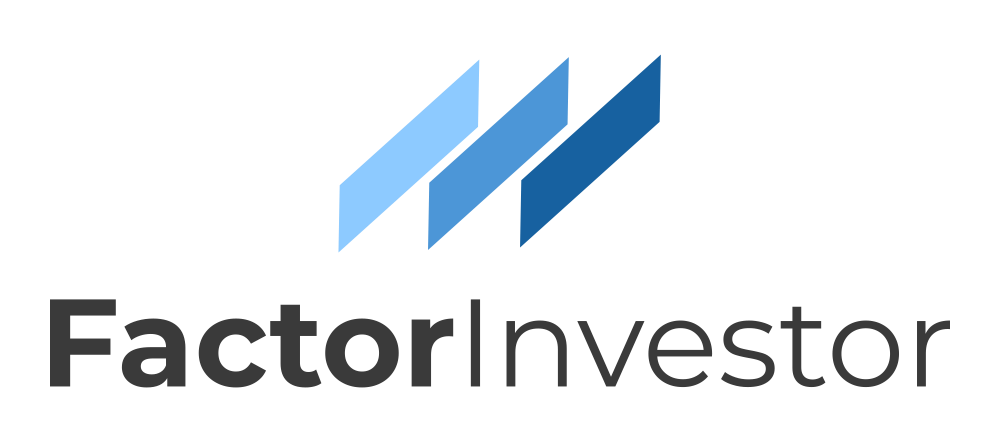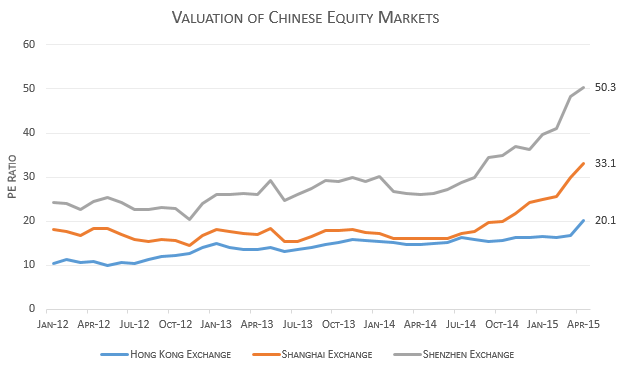The bubble nobody can resist
Almost nobody can resist the allure of a market appreciating at triple digits. The rapid increase in the Chinese equity market is driving up global valuations. Even index players are getting into the game. FTSE, the index provider for the popular Vanguard Emerging Market ETF (VWO) has decided to include Chinese A shares in its indexes–further proof that owning a market-capitalization weighted index may be a poor investment strategy. The tech and small cap heavy Shenzhen exchange trades at a price to earnings ratio of 50x. The Shanghai exchange trades at at 33x, and the Hong Kong exchange is at 20x.
The only thing more astounding is the interest new issues are receiving. On June 5, China National Nuclear received bids of $273 billion for $2 billion of its shares (Bloomberg). On the first day of trading, it soared 44%–the maximum daily move allowed. From a macro perspective, the driver behind this manic demand is the loosening of capital controls and a tidal wave of pent up IPO supply. Chinese domestic investors are notoriously under-diversified with approximately 72% of their assets in real estate and just 6% in equities. China has notably insecure property rights so any opportunity for onshore investors to diversify is welcome. Since 2005 China has been attempting to gradually liberalize its financial markets. Recently, the mania reached such heights that regulators explicitly discouraged companies from issuing shares at high valuations. The 144 IPO’s launched this year have appreciated 44% on the first trading day. The flood gates have opened.
If we look at the global ex U.S. equity landscape on an equal-weighed basis over the last 15 years in the chart below, notice the strong divergence in the overall market PE Ratio, including China, versus the ex-China version. Ex China, the market is 23% cheaper.
Nobody knows how long the Chinese bull market will persist and nobody knows when it will pop. Per Lord Keynes, “the market can remain irrational longer than you can remain solvent”.



